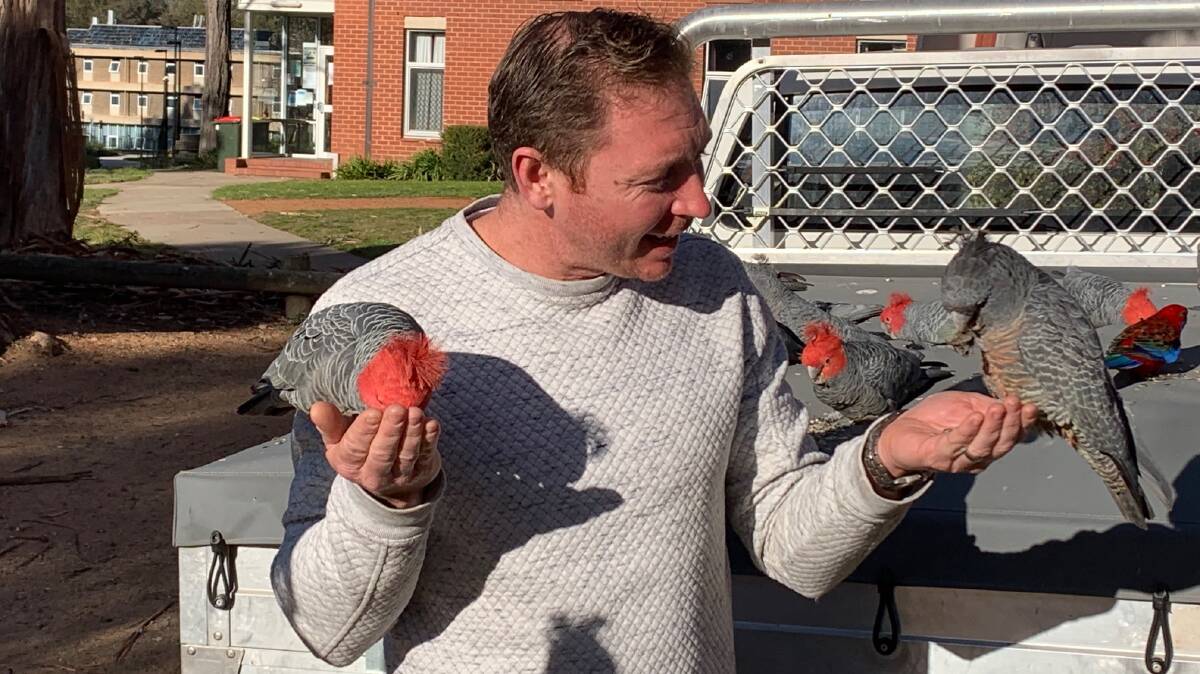
This column's recent exposé on gang-gangs and their nesting hollows struck a chord with many readers, including Bruce Thornton of Watson, who, like many Canberrans, has a soft spot for the native bird with the outrageous call and cheeky demeanour.
Bruce grew up on Moore Street in Turner, on the southern side of Haig Park, and as a boy loved seeing "the birds frolic in the pencil pines, especially the gang-gangs".
Sometimes he would feed them.
So, when Bruce scored a job with Facilities & Services at ANU and noticed a few gang-gangs flying around the campus, he started spreading sunflower seed on the tray of his ute. That was 17 years ago. Now, Bruce feeds the birds every day. Yes, every single day. He even rides his bike in from his home in Watson on weekends and public holidays to make sure he can see his feathered friends.
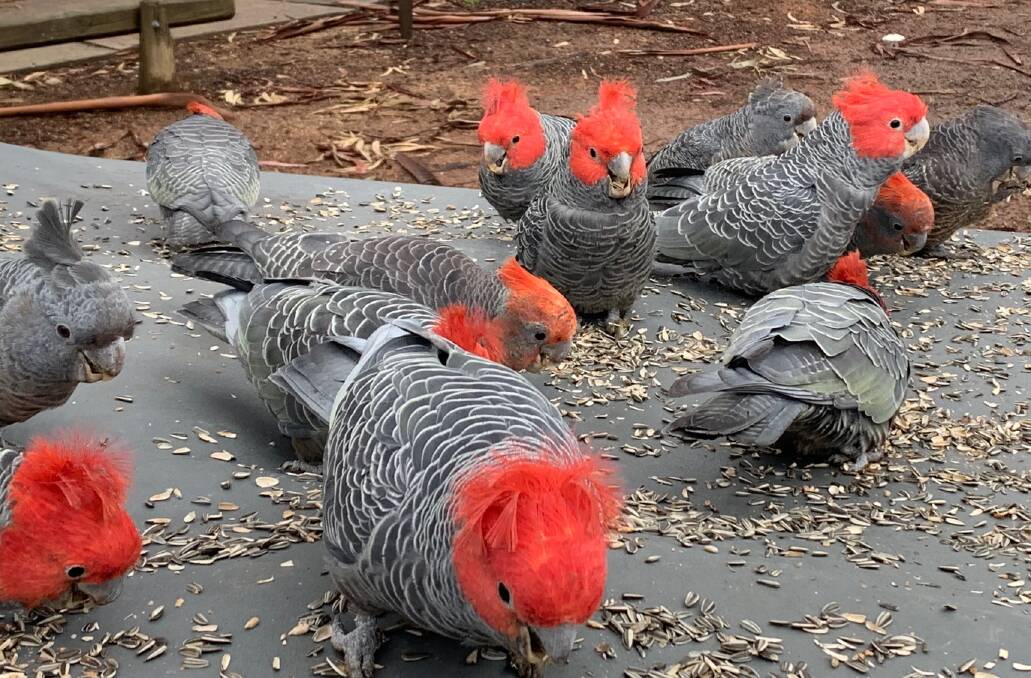
"I never miss a Saturday or Sunday - as I'm not working and I can spend more time enjoying the birds," he explains.
Although Bruce "tosses a few handfuls of grey sunflower seeds to the birds daily", he is careful to ensure they don't rely on it.
"They usually arrive with sticky feet and beaks from feeding elsewhere and often it's not the same birds each day," he says.
"They have a quick feed and a drink of water from a little water station I've set up for them, and then away they fly."
The birds often land on his arms, even his head. "It's quite amazing [and] the students love it, it puts a smile on their faces."
The largest flock of gang-gangs to land on Bruce's ute is 42 "but on average there's about 20 to 30 each time".
"Other species sometimes show up, including eastern and crimson rosellas, crested pigeons, lorikeets, cockatoos, and a couple of short-billed corellas," he reveals.
Michael Mulvaney, who has been leading a citizen science project about the feeding and nesting habits of the bird, reports that knowledge about the eating habits of gang-gangs is increasing all the time.
"We initially thought they ate 63 types of food, but we now know they eat over 200 types of food," Michael explains.
It also appears that gang-gangs have different tastes depending on where they live.
"For example, down at Geelong in Victoria they feast on Pinus radiata cones, but around Canberra, even when we've got it coming out of our ears, they rarely eat them," Michael says.
Then there are the cicada-eating gang-gangs at Hughes. "Why does only that population of gang-gangs eat cicadas when they can be found all over the country?" he ponders.
Another mystery to solve.
Gang-gangs go global
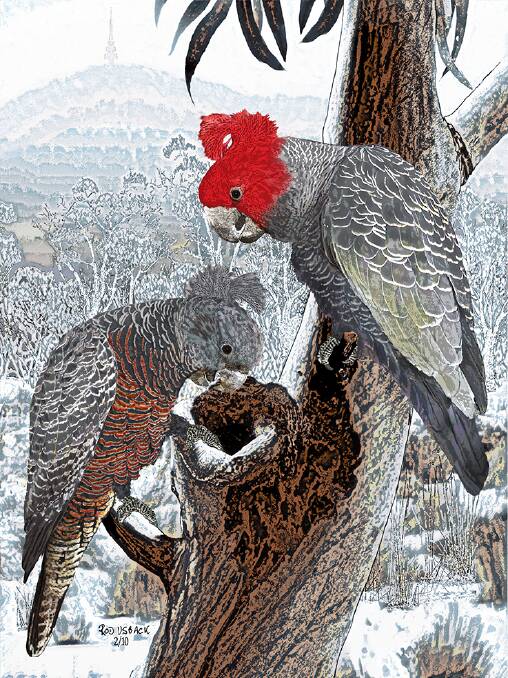
Just like Bruce Thornton, from the time he was a boy, Rod Usback of Flynn has always loved gang-gangs. "I have many fond childhood memories of listening and watching these birds as they 'creaked' and ate the seeds from the pines in Haig Park," he reveals.
When Rod recently began to dabble in digital art, he couldn't resist turning his attention to gang-gangs. It proved a masterstroke for last year he won a coveted gong at an international online digital art competition (Camelback Gallery's Into the Wild visual art exhibition) with his artwork, Let's Come Back in the Spring Bluey.
According to Rod, "the painting shows a pair of gang-gangs in a frosty Canberra landscape, near Majura, where "she" is surveying a future nesting place, whispering to her mate: "Lets come back in the Spring Bluey". Aww.
Eagles Nest
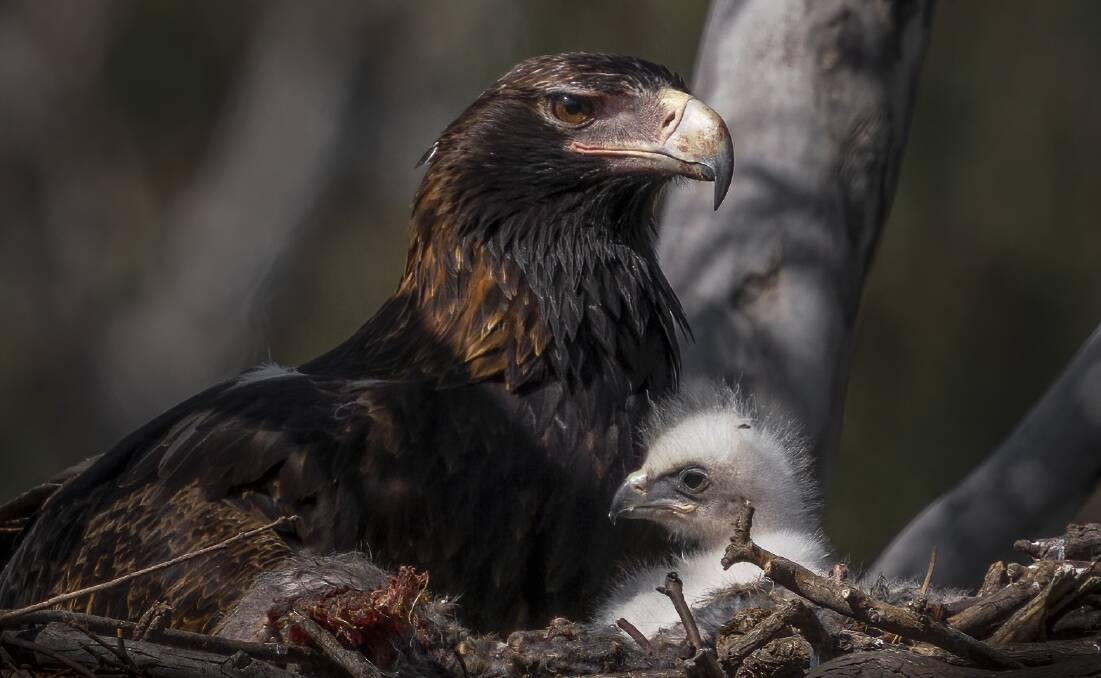
Still in the avian world, Peter Keast of Torrens couldn't resist sharing this photo of a wedge-tailed eagle and chick in north Canberra, taken by his son-in-law Trevor Rix.
"We followed the hatching through to fledging and could get quite close to the nest for photos without disturbing the mating pair," explains Peter who is keeping mum about the exact location of the nest to protect the birds from any unwanted attention. What a wonderful photo.
Time travel in Gunning
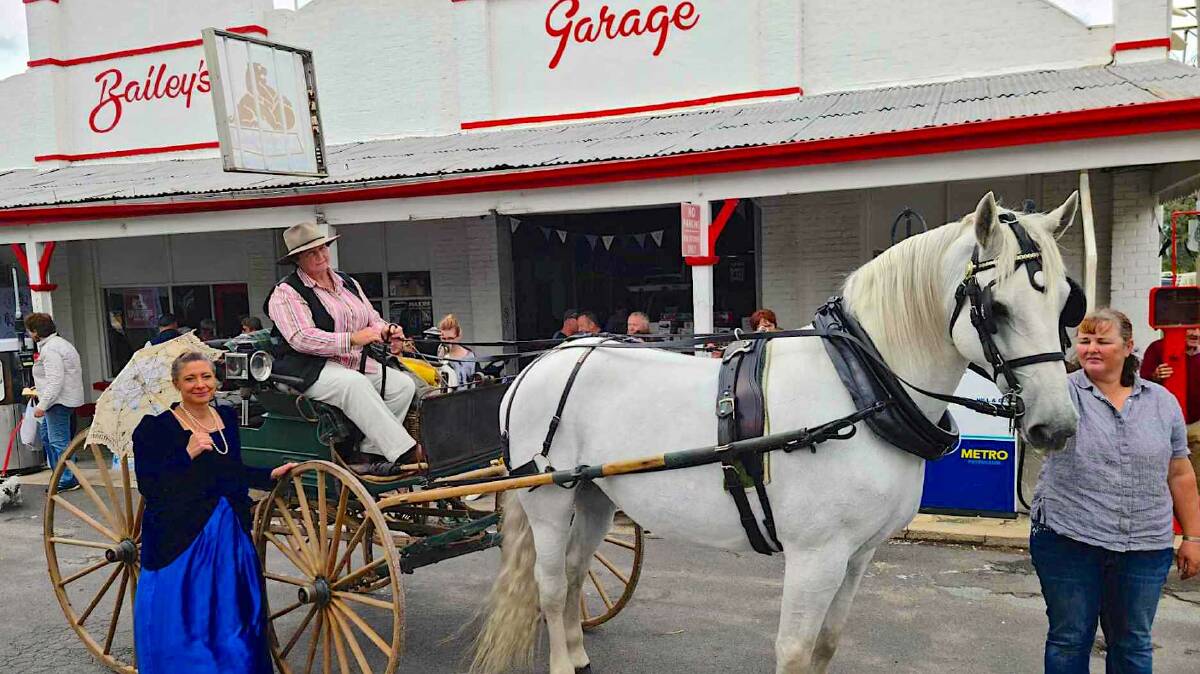
It was great to see such a big crowd at Gunning to mark the town's bicentenary last weekend. A highlight for many was the arrival of a horse and cart, vintage 1925 car and electric vehicle (EV) which parked in line outside historic Bailey's Garage in the main street, representing transport from three different centuries of transport in Gunning.
"It's interesting that, after 200 years, we have come full circle, our car like the horse that pulled the 1820s carriage, runs on renewable energy," explained John Storey, owner of the EV who "charges it mainly off our own solar panels as we are off-grid".
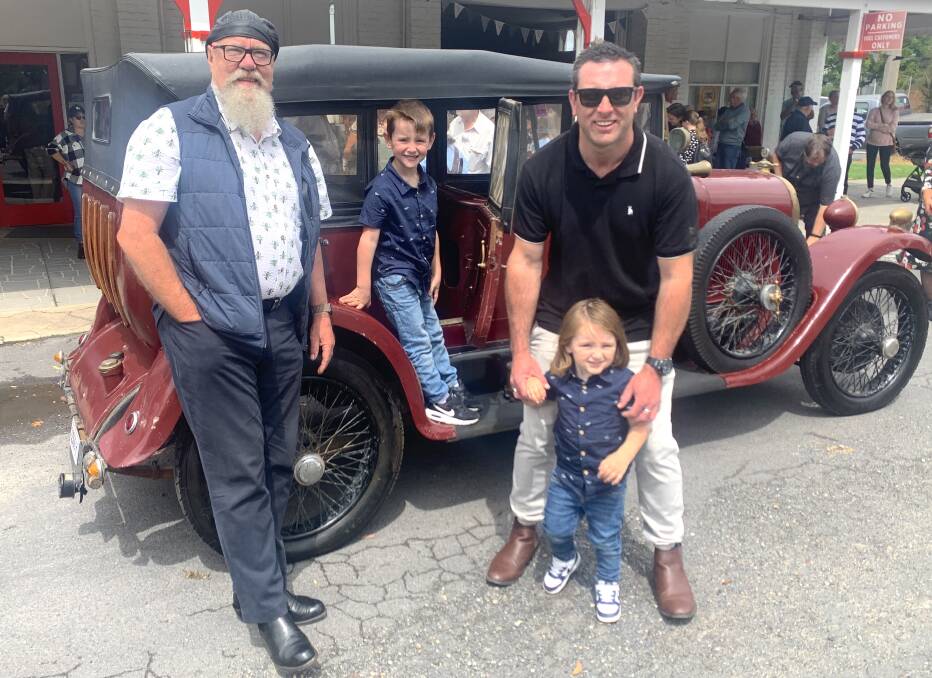
The celebrations attracted people from far afield, including Cam Gilbey and his two boys Noah, 6, and Kodah, 2, who travelled from Wollongong. Cam is the great-great-grandson of Frank Bailey who established Bailey's Garage in the early 1900s. "It gives me goosebumps to be here today," confessed Cam as we watched the horse and cart pull up. When current owner Craig Southwell's family purchased the business more than 70 years ago, the Bailey name was so well known in town they continued to trade under it.
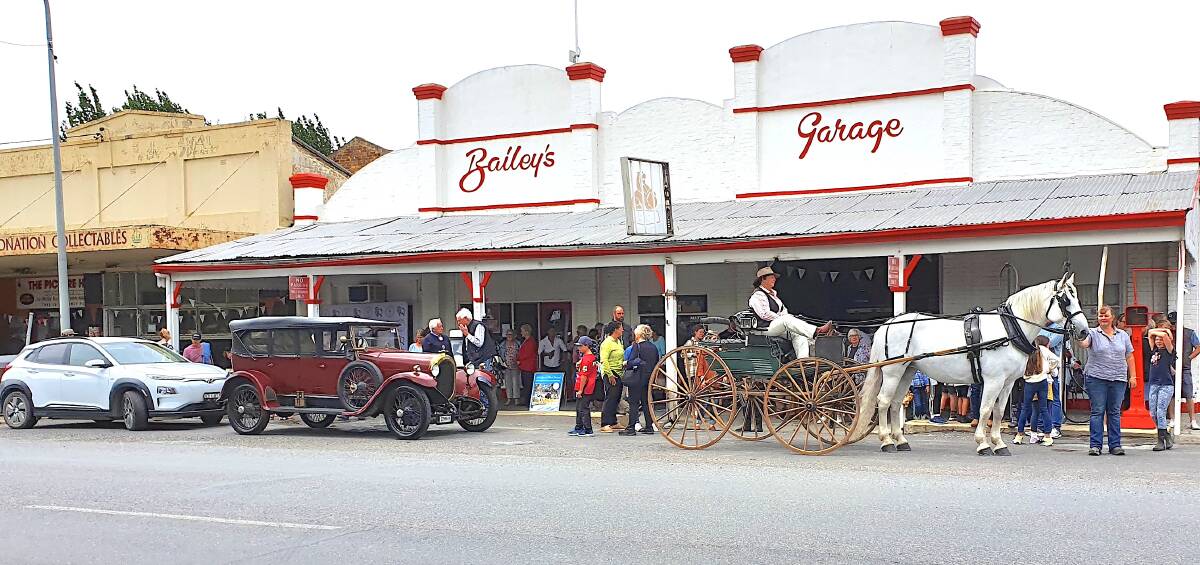
While at the Gunning festivities I noticed the electric piano played beautifully by Dianna Nixon was plugged into the EV charging point outside Bailey's Garage. Gee, times really are changing. I wonder what entertainment and transport options we might see lined up outside the garage in another 200 years. The mind boggles.
Are pumice stones headed our way?
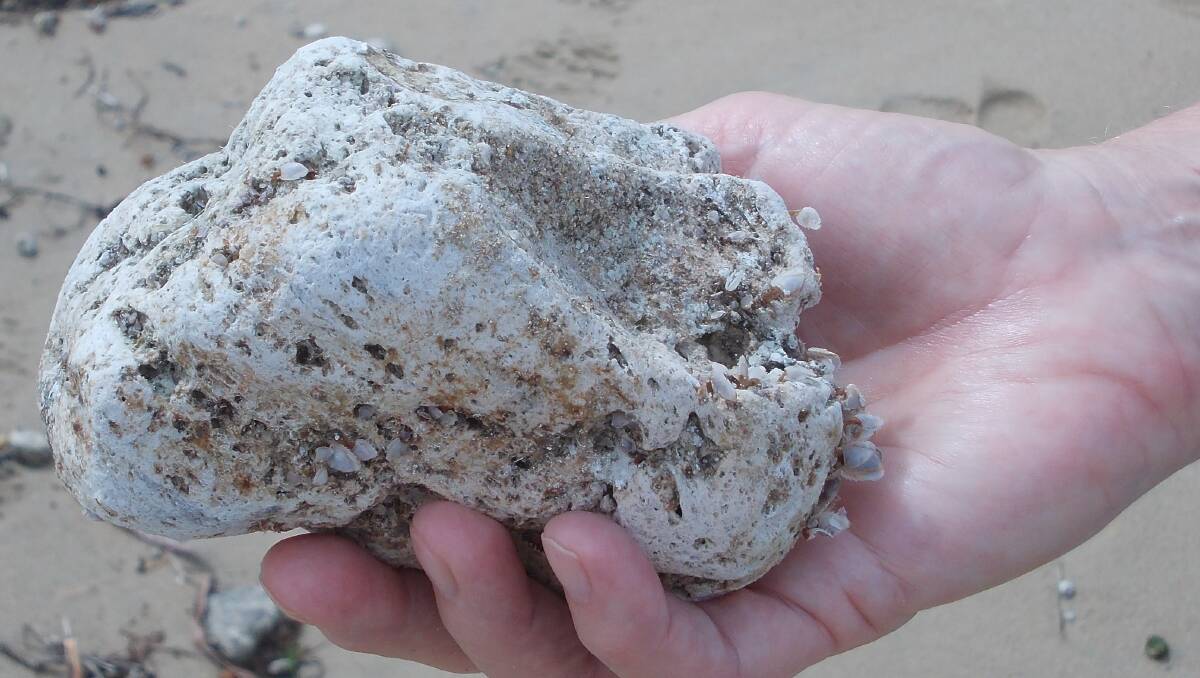
Regular beachcombers might recall all the pumice stones that washed up on South Coast beaches about six to 10 years ago. They were due to the 2012 eruption of the Havre Seamount about 1000 kilometres north of Auckland.
At the time, Andrew "Kiwi" Wilson of Downer and his kids were fascinated by the far-flung highly porous stones and started their own mini collection of them. Now they want to know "if the recent eruption of the volcano near Tonga will also result in thousands more pumice stones washing up on South Coast beaches".
I'm reliably informed the January 15, 2022 eruption of the Hunga Tonga Hunga Ha'apai is unlikely to result in similar pumice rafts heading our way.
According to pumice expert Dr Scott Bryan of the School of Earth, Environmental & Biological Sciences at the Queensland University of Technology, this is due to two reasons. "Firstly, the magma composition erupted is basaltic, and not the more silica-rich dacite or rhyolite that produced the previous pumice rafts," he explains. "Secondly, the eruption essentially pulverised the magma into ash (sand-sized) particles as evidenced from the ash fall on the surrounding islands."
Instead of pumice, Scott warns that in coming weeks Andrew and his family might instead find a lot more rubbish on Australian beaches.
"At some point we might see some debris (plastic bottles etc) that was entrained into the water from the tsunami waves, wash up on our beaches," explains Scott.
As to what happened to the millions of pumice stones from the Havre Seamount eruption? According to Scott, they've now well and truly dispersed over at least 4 million square kilometres of ocean.
"You can still find pieces on the beach, particularly around south-east Queensland, but they usually reside high up on beaches and in the dunes, he explains. Oh, and there's probably a fair few still stashed away in the Wilson family garage as well.
WHERE ON THE SOUTH COAST?
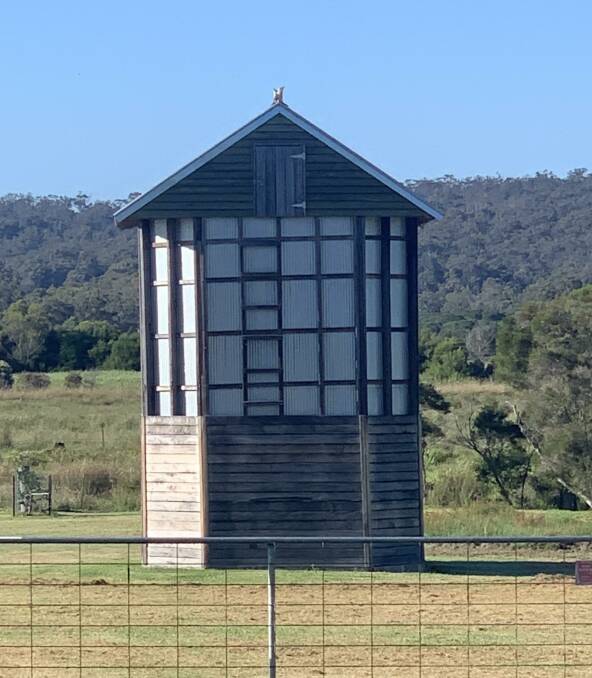
Rating: Medium - Hard
Clue: A cabin-boy from Charles Darwin's The Beagle lived near here.
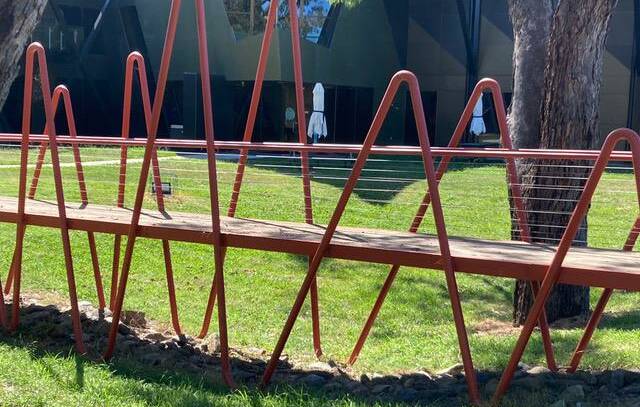
Last week: Congratulations to first-time winner Samantha Faulkner of Theodore who was first to identify last week's photo as the bridge at the "back" of Maraga, the AIATSIS building at Acton Peninsula. Maraga is a Ngunnawal word for a strong and robust shield. The clue of "back-to-front" referred to the fact the building was initially designed to face the opposite direction, but to protect two significant scar trees, its orientation was flipped prior to construction.
How to enter: Email your guess along with your name and suburb to tym@iinet.net.au. The first correct email sent after 10am, Saturday March 12, 2022, wins a double pass to Dendy, the Home of Quality Cinema.
SPOTTED
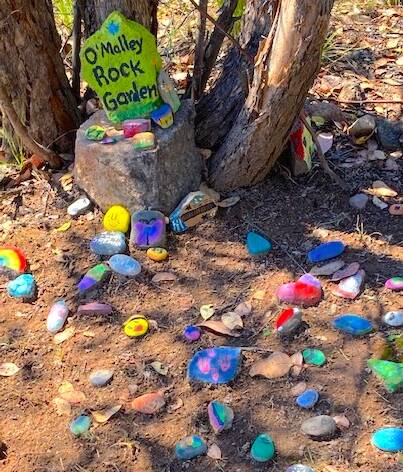
The painted pebble rock garden craze continues unabated. John Berry of Isaacs has been watching the one at the end of Karawatha Place in O'Malley grow and grow since last year's COVID lockdowns. "There are over 80 rocks now," he says, adding "I hope it lasts beyond vandalism". Me too.







